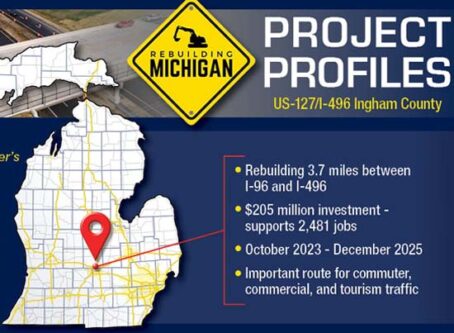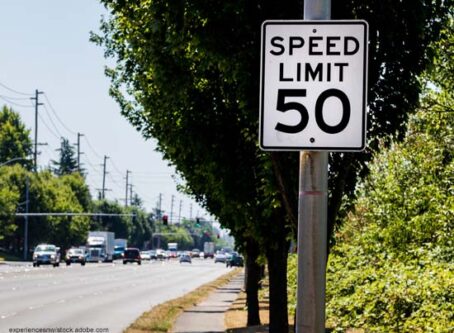Eight states and D.C. pledge efforts toward zero-emissions trucks
Eight states and the District of Columbia recently vowed to have trucks and buses reach zero greenhouse gas emissions by an unspecified date. Each state will propose their zero-emissions memorandum of understanding to their respective governor’s next summer.
On Thursday, Dec. 12, environmental agencies for California, Connecticut, District of Columbia, Maine, Massachusetts, New Jersey, Oregon, Rhode Island and Vermont all signed a statement of intent to have medium- and heavy-duty vehicles in their state reach zero emissions. To get there, electrification is the key.
“Our states recognize that nearly all new motor vehicles need to be electric by 2050 to achieve the necessary reductions in greenhouse gas emissions,” the statement of intent asserts. “Therefore, transportation electrification is a key climate action strategy and a top air quality priority for our states.”
All but Maine and D.C. also signed the 2013 Governors’ Zero Emission Vehicle Memorandum of Understanding. The MOU created a zero-emissions vehicles task force. According to its website, the task force will help implement a commitment by participating states “to having at least 3.3 million ZEVs operating on their roadways by 2025.” Zero-emissions vehicles include pure battery-electric vehicles, plug-in hybrid electric vehicles and hydrogen fuel cell electric vehicles.
The 2013 MOU deals primarily with passenger vehicles. The latest statement of intent targets medium- and heavy-duty vehicles exclusively and will use the same zero-emissions vehicles task force. The Northeast States for Coordinated Air Use Management organization will facilitate the effort.
How, exactly, participating states plan to reach the zero-emissions goal is yet to be determined.
State agencies will need to devise a plan. Even then, any plans will need to go through legislative hurdles and signed off by each governor.
The California Air Resources Board is holding its first meeting regarding a proposed Advanced Clean Trucks regulation. If implemented, the regulation will establish sales and reporting requirements for zero-emissions trucks. Consideration for adoption is expected sometime in 2020.
“We need to design a regulatory program that gets to the heart of this problem,” CARB Chair Mary D. Nichols said in a statement. “We will move farther faster in partnership with other states who share the same commitment to cleaning up trucks and protecting public health.”
Currently, zero-emission trucks are only feasible for local and regional hauls. Mileage range is not yet sufficient for long-haul trucking. Although several manufacturers are working on electric heavy-duty vehicles, such as Tesla’s Semi, mileage still cannot compete with diesel-powered trucks. Furthermore, the charging station infrastructure needs improvement for cross-country trips.
It is worth noting that what the state agencies signed was a memorandum of understanding. In other words, there is no concrete plan for heavy-duty zero-emissions vehicles. Rather, signatories are committing to efforts to reach a certain goal. How, or if, they can reach that goal remains to be seen.
In California, the state has invested nearly $1 billion in cap-and-trade proceeds into efforts to accelerate and promote commercialization of zero- and near-zero emissions trucks and buses. Larger fleets like Pepsico and FedEx have become partners in the initiatives.
Although the federal government has looked into the issue, some states want quicker action.
During a House Highways and Transit subcommittee hearing on Dec. 5, Del. Eleanor Holmes Norton, D-D.C., emphasized the need to move to zero-emissions trucks. Rep. Peter DeFazio, D-Ore., echoed that sentiment.
In fact, many of the stakeholders testifying as witnesses during the hearing highlighted issues with greenhouse gas emissions from trucks. On the other hand, many of those witnesses were railroad industry stakeholders stating their case to move truck freight to rail.
“As the federal government continues to ignore the public health of our citizens and the impacts of climate change, state leadership in pursuit of decarbonizing the transportation sector is needed now more than ever,” Katie Dykes, Connecticut Department of Energy and Environmental Protection commissioner, said in a statement.
States involved with the 2013 MOU already have zero-emissions vehicle incentives in place for light-duty vehicles. For example, Vermont had a pilot program that gave $500 incentives for consumers at point-of-sale and $250 incentives for dealers. Meanwhile, Rhode Island has established state fleet purchase requirements. An executive order requires at least 75% of state motor vehicle acquisitions use alternative fuels, and the remaining 25% must be hybrid-electric.
Signatories will present a proposed MOU to their respective governors and the mayor of the District of Columbia for consideration in the summer of 2020.









